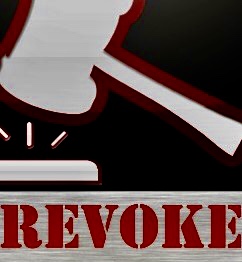
Re De Bonis 2023 BCSC 713 removed a brother and sister who were jointly appointed co-executors of their parent’s estate, by reason of their inability to work together and their toxic relationship and appointed a corporate trustee in their place.
Removal of Executor
There are three sources of authority that the Court can draw on to remove an executor or trustee and appoint a replacement:
-the Wills, Estates and Succession Act, S.B.C. 2009, c. 13 [WESA],
-the Trustee Act, R.S.B.C. 1996, c. 464,
and the Court’s inherent authority: Morelli v. Morelli, 2014 BCSC 106 at para. 29.
Section 158 of WESA, govern an application to remove or pass over a personal representation and replace them. The relevant portions of s. 158 include:
(3) Subject to the terms of a will, if any, and to subsection (3.1), the court, by order, may remove or pass over a person otherwise entitled to be or to become a personal representative if the court considers that the personal representative or person entitled to become the personal representative should not continue in office or be granted probate or administration, including, without limitation, if the personal representative or person entitled to become the personal representative, as the case may be, …
(f) is
(i) unable to make the decisions necessary to discharge the office of personal representative,
(ii) not responsive, or
(iii) otherwise unwilling or unable to or unreasonably refuses to carry out the duties of a personal representative,
to an extent that the conduct of the personal representative hampers the efficient administration of the estate, or …
Section 159 of WESA provides the Court with the statutory authority to appoint an executor in circumstances where the Court has discharged or removed an executor.
Sections 30 and 31 of the Trustee Act, provides the statutory authority for the Court to remove an individual as trustee of an estate and appoint a replacement. In the application of both WESA and the Trustee Act, the same considerations apply, as provided below.
The Court’s discretion to remove an executor should be guided by the principles listed in Parker v. Thompson (Trustee), 2014 BCSC 1916 at para. 37. The will-maker has the right to choose their executor, and as such their decision is entitled to deference and will only be interfered with if there is clear and cogent evidence to do so. The executor’s acts or omissions must be of such a nature as to endanger the administration of the estate.
The Court’s main consideration is the welfare of the beneficiaries: Parker at para. 37; Burke v. Burke, 2019 BCSC 383 at para. 29. It is not the interests of a particular beneficiary that are to be considered, but rather the benefit of the beneficiaries collectively: Conroy v. Stokes, [1952] 4 D.L.R. 124 at p. 128, 1952 CanLII 227 (B.C.C.A.).
The analysis is contextual and each case will turn on its facts: Burke at para. 43.
In Conroy, the Court of Appeal described the four categories of misconduct by an executor that can warrant their removal:
a) Endangerment of trust property;
b) Want of honesty;
c) Want of proper capacity to execute duties; and
d) Want of reasonable fidelity.
The existence of friction between the executor and one or more beneficiaries is generally, in and of itself, not sufficient to warrant the removal of the executor: Letterstedt v. Broers, (1984), 9 App. Cas. 371 at 389 (South Africa P.C.). However, animosity between those parties, or co-executors, can be relevant to whether it hampers the proper administration of the estate: Dunsdon v. Dunsdon, 2012 BCSC 1274 at para. 202; Levi-Bandel v. McKeen, 2011 BCSC 247 at paras. 21–25. In such circumstances, a finding of wrongdoing is not necessary: Dunsdon at para. 202; Weisstock v. Weisstock, 2019 BCSC 517 at para 44.
In Radford v. Radford Estate (2008), 43 E.T.R. (3d) 74, 2008 CanLII 45548 (O.N.S.C.), Justice Quinn comments that removal is not intended to punish past conduct:
Removal not intended to punish past misconduct
[106] “The authorities are, I believe, consistent in placing the emphasis on the future administration of the estate, and the risks to which it will be exposed if the trustee remains in office. The question is whether the trust estate is likely to be administered properly in accordance with the fiduciary duties of the trustee and with due regard to the interests and welfare of the beneficiaries. The sanction of removal is intended not to punish trustees for past misconduct but rather to protect the assets of the trust and the interests of the beneficiaries”: see St. Joseph’s Health Centre v. Dzwiekowski, supra, at para. 28.
[107] But, “past misconduct that is likely to continue will often be sufficient to justify removal …”: see St. Joseph’s Health Centre v. Dzwiekowski, supra, at para. 29.
[Emphasis added.]
Conflict of Interest
An executor’s conflict of interest may warrant removal. In Hall v. Hall (1983), 45 B.C.L.R. 154, 1983 CanLII 396 (S.C.), Justice Proudfoot held that conflict of interest and a conflict of duty demonstrate want of fidelity: see also Pangalia Estate, 2021 BCSC 1070 at para. 22. Further, in Morelli at para. 30, Justice Harvey held that the “welfare of the beneficiaries of an estate may be endangered if there is a conflict of interest”. However, not all perceived or actual conflicts of interest will give rise to the removal of an executor: Burke at para. 43.
In Ching Estate (Re), 2016 BCSC 1111, an executor was passed over due to perceived unequal treatment and conflict of interest, with Justice Affleck holding that the “perception of a disabling conflict of interest is overwhelming”: at para. 20. The Court held that a “perceived” conflict of interest may lead to removal:
[22] The authorities indicate that even a “perceived” conflict of interest between an executor’s personal interests and her obligation to administer the trusts in the will in the interests of the beneficiaries may cause this court to intervene to appoint a new executor or an administrator to avoid even the appearance of conflict.




